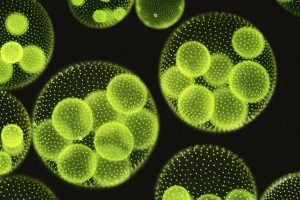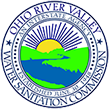
Nutrient pollution, especially from nitrogen and phosphorus, has consistently ranked as one of the top causes of degradation in some U.S. waters for more than a decade. Excess nitrogen and phosphorus lead to significant water quality problems including harmful algal blooms, hypoxia and declines in wildlife and wildlife habitat. ORSANCO has been working with federal, state and local agencies to address the causes and effects of excess nutrients both within the Ohio River Basin and in downstream waters.
Nutrient Criteria Development
The Clean Water Action Plan, a presidential initiative released in 1998, directed US EPA to develop numeric nutrient criteria for the nations waters. Numeric criteria will drive water quality assessments and management. Perhaps most importantly, they will create state- and community-developed environmental baselines that allow us to manage more effectively, measure progress, and support broader partnerships based on nutrient trading, Best Management Practices (BMPs), land stewardship, wetlands protection, voluntary collaboration, and urban storm water runoff control strategies.
Gulf of Mexico Hypoxia
A hypoxic (low oxygen) zone develops in the Gulf of Mexico near the Mississippi River every summer. It is caused by excess nutrients coming from the Mississippi River which feeds large algae blooms in the Gulf. These algae blooms are eventually decomposed by bacteria which consume oxygen in the process. The resulting area of low dissolved oxygen has been measured in excess of 20,000 km/sq (about the size of the state of Massachusetts). The Mississippi River/Gulf of Mexico Watershed Nutrient Task Force was formed to address this issue.
US EPA Gulf of Mexico Hypoxia Task Force
Water Quality Trading
Water quality trading is an innovative approach to achieve water quality goals more efficiently. Trading is based on the fact that sources in a watershed can face very different costs to control the same pollutant. Trading programs allow facilities facing higher pollution control costs to meet their regulatory obligations by purchasing environmentally equivalent (or superior) pollution reductions from another source at lower cost, thus achieving the same water quality improvement at lower overall cost.
ORSANCO is a project partner with the Electric Power Research Institute to develop a nutrient trading program in the Ohio Basin.
Other Programs
- Algae & Nutrient Monitoring
- Bacteria TMDL
- Biennial Water Quality Assessment
- Bimonthly Water Quality Sampling
- Clean Metals
- Contact Recreation Bacteria
- Dissolved Oxygen Monitoring
- Emergency Response
- Fish Population
- Fish Tissue
- Harmful Algal Blooms
- Macroinvertebrates
- Mercury Supplemental Studies
- National Rivers and Streams Assessment
- Nutrient Reduction Activities
- Ohio River Users
- Organics Detection System (ODS)
- PFAS Supplemental Study
- Pollution Control Standards
- Source Water Protection
- Water Quality Trends
- Watershed Pollutant Reduction
- Wet Weather Studies

